1.866.316.7268 [email protected]
With its mild climate, tranquil gardens, famous hot springs, historic castles, beautiful countryside, and warm-hearted people, Shikoku offers a dramatic experience that will create travel memories for a lifetime.
Don’t hesitate to contact us. We are an expert team and we are happy to talk to you.
1.866.316.7268
The rural mountainous island of Shikoku will charm you with its natural beauty, mild climate, laid-back atmosphere and friendly people. It is the smallest of the four major islands of Japan, and is also the one least visited by foreigners and with the lowest population, although this tranquil island offers elements of traditional Japan that are hard to find elsewhere. For more than 1,000 years, Shikoku has been the focus of “henro” (pilgrims) following in the footsteps of Kobo Daishi (the 9th century Buddhist monk who helped to change Japanese religion forever) in their ever-elusive search for enlightenment.
Bathe in one of Japan’s oldest onsen with a 1,000 year history. Stroll through one of Japan’s best gardens designed by Samurai and took more than 100 years to build. Visit three of Japan’s 12 remaining original castles. View a demonstration of the Awa Odori Dance Festival held every August, the largest dance festival in Japan. Observe a Tokushima Bunraku (Japanese puppet) performance. The puppets have larger heads, made for outdoor theaters normally at Buddhist temples. Visit Japan’s oldest working kabuki theater. Enjoy Iya Valley, considered one of Japan’s most remote regions.
Shikoku is the origin of most of the citrus sold in Japan. Learn about the many different types of citrus available only in Japan. Dine on some of Japan;s most popular food specialties including Katsuo tataki, Tai-Meishi, and Sanuki Udon.
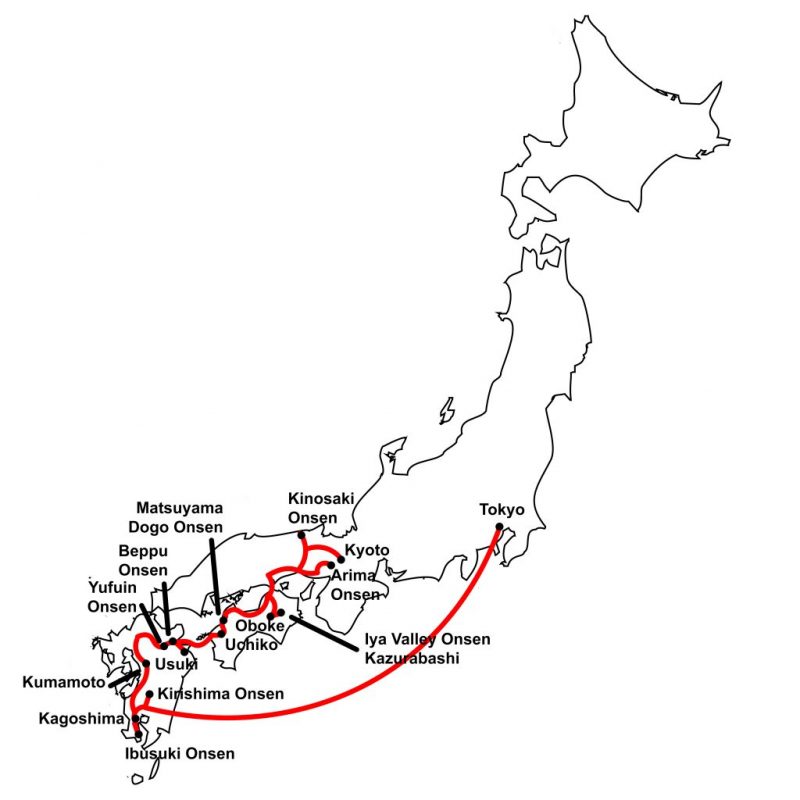
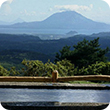
Kirishima Onsen
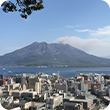
Senganen Garden, Shiroyama Park, Black Pork Katsu Lunch
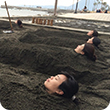
Sand Baths
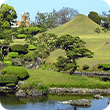
Kumamoto Castle, Suizenji Garden, Kumamoto Ramen Lunch
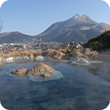
Free Day

Shiraike Hell, Oniyama Hell, Kamado Hell, Umi Hell, Oniishibozu Hell
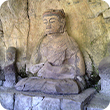
Usuki Stone Buddhas, Usuki Samurai District, Fugu (Blowfish) Lunch
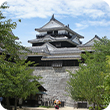
Matsuyama Castle

Free Afternoon
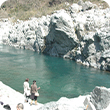
Oboke Gorge Sightseeing Boat Cruise, Lapis Oboke Museum
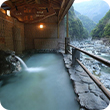
Free Time
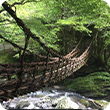
Peeing Boy Statue, Kazurabashi Vine Bridge
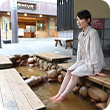
Free Time
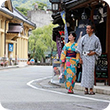
Free Time
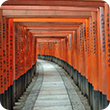
Free Time
You will be staying overnight in the city of Osaka. You will be met at Osaka’s Kansai Airport or Osaka’s Itami Airport, and escorted to the hotel in Osaka. We will leave a message for you at the hotel informing you of the meeting time for the next day. If you would prefer to arrive in Tokyo, contact us for the details. No meals included.
Travel: 1-1/2 Hours; Walking: Light
Before breakfast you will prepare your luggage for transfer to Tokushima. Your overnight bag will need to be packed for 2 days and 1 night. You will bring your luggage to the lobby of the hotel for transfer. After breakfast, we will start the day with a welcome/orientation meeting. We begin our adventure by traveling to Tokushima on the island of Shikoku by public bus. Tokushima is best known for its Awa Odori festival and dance held every year in mid-August. Over a million people visit Tokushima during the 4 day festival to watch the eighty-thousand dancers dressed in colorful yukatas and half-moon shaped straw hats who parade through the city waving their hands and shuffling their feet to an insistent two-beat rhythm played on taiko drums, flutes, and shamisen. The festival started in 1587 when the first daimyo (feudal lord) of Tokushima is said to have initiated the celebration on completion of his castle. The people enjoyed it so much that they held the celebration the next year, and so on for the centuries that followed. Since we will not be in Tokushima during the festival, we will do the next best thing by visiting the Awa Odori Kaikan. This museum chronicles the history of the festival and features numerous exhibits relating to the dance. Best of all, we will attend a one hour live performance demonstrating the dances performed during the festival. And then we will enjoy a ride up the ropeway to enjoy the view of Tokushima. Breakfast at the hotel and lunch and dinner at a local restaurant are included.
Travel: 4 Hours; Walking: Light
In addition to the Awa Odori festival, Tokushima is also famous as the start and the end of the 88 Sacred Temples Pilgrimage. These 88 temples were founded by Kobo Daishi, one of the most influential Buddhist Monks in Japanese history. The route of this pilgrimage takes one all the way around the island of Shikoku. If you are walking the entire route, as was done for hundreds of years, the pilgrimage would take about two months. Today, tour buses whisk pilgrims around the entire route in about two weeks. Today we will be a “henro” (pilgrim) for a day by following a section of the pilgrimage and visiting 5 of the 88 temples on our path to enlightenment. Breakfast at the hotel is included.
Travel: 1 1/2 Hours; Walking: Heavy
We will start the day by visiting the Awa Jurobe Yashiki. This small museum documents the local Bunraku, and also includes a short performance. After lunch, we will enjoy a ride on Japan’s only DMV (Dual Mode Vehicle). This small bus is able to navigate both highways and railroad tracks. After checking into the accommodations at Shishikui Onsen, we will enjoy a kaiseki dinner at the accommodation. Breakfast and dinner at the accommodations are included.
Travel: 4 Hours; Walking: Medium
After breakfast, we will drive to Mikurodo cave. It is said that Kobo Daishi, the famous Buddhist monk in the 9th and 10th centuries, meditated here for months until reaching enlightenment. Next we will take a short walk around the Muroto Geopark. After stopping for lunch, we will visit the city of Aki to visit the former Samurai District located next to Aki Castle. The castle is gone now, but a few of the buildings from that time still remain. Next, we will visit Ioki Cave and Gorge. The short, 40 meter cave is lined with fossilized shells embedded in the rocky walls. Erosion from ocean waves carved this cave years ago when the area was surrounded by the sea. The canyon walls that extend beyond the cave are cloaked with a thick carpet o ferns. Later in the afternoon, we will finish our drive to the city of Kochi, where we will be staying for the next two nights. Breakfast and dinner at the accommodations and lunch at a local restaurant.
Travel: 4 Hours; Walking: Heavy
After breakfast, we will visit the nearby Kochi Castle. Kochi Castle is one of the remaining 12 original castles in Japan. A unique feature of Kochi’s castle is that its main tower was not only used for military purposes, but also as a residence. In most other castles, the lords usually resided in separate palace buildings rather than in the castle keep. Next, we will visit Katsuurahama. A famous statue of Kochi’s favorite son, Sakamoto Ryokma stands near the beach. Sakamoto was one of the architects of modern Japan. He was instrumental in negotiating an alliance between the Choshu and Satsuma clans that helped to bring an end to Japan’s fuedal age in 1868. Breakfast at the lodging and lunch at a local restaurant is included.
Travel: 2 Hours; Walking: Heavy
After breakfast we will be driving from Kochi to Cape Ashizuri, making two stops along the way. After lunch, we will walk along the top of the cliffs overlooking the Pacific Ocean for a short time, and visit Kongofuuji temple, temple #38 of the Shikoku Pilgrimage. We will finish the day by driving to Uwajima where we will be staying the night. Breakfast at the accommodations and lunch and dinner at a local restaurant.
Travel Time: 5 Hours Walking: Medium
We will continue to the city of Ozu, a former castle town. Here we will visit the Ganryu Sanso. It is a subtle yet outstanding villa located by the river. The villa was built around 1907, rustic in appearance and traditional in construction methods but artistic in features. It took ten years to design the villa, four years to build it using 9000 artisans. Next we will travel to Uchiko. Now a vestige of traditional, rural Japan, Uchiko was once a prosperous center of wax and paper production. Yokaichi Old Town is Uchiko’s preserved street of houses where most of the town’s attractions can be found. This historical district looks just as it did over 100 years ago, when wealth and prosperity came to Uchiko through its wax trade. We will finish the day by traveling to Matsuyama. Breakfast and dinner at the accommodations.
Travel: 2 Hours and 15 minutes; Walking: Heavy
Today is a free day to explore Matsuyama and Dogo Onsen. Tour the Matsuyama Castle, one of Japan’s 12 remaining original castles. Experience the Dogo Onsen Honkan at the center of Dogo Onsen, said to be the inspiration for Miyazaki’s masterpiece “Spirited Away”. Stroll through Dogo Onsen with it’s many shops and restaurants. Or visit Ishiteji Temple, temple #51 of the Shikoku Pilgrimage. Breakfast at the accommodations.
Travel: N/A; Walking: TBD
After breakfast, we wil travel by train from Matsuyama to Oboke. Oboke is located in a narrow, steep-sided gorges near the entrance to the Iya Valley. Before entering the Iya Valley, we will take a gentle 30 minute boat ride along the gorge. Next, we will enter Iya Valley. The Iya Valley is a secluded, mountainous valley along the Iya River. Its steep forested slopes are connected to the outside world by a winding, sometimes unbelievably narrow mountain road that navigates the valley. Historically the Iya Valley has been a difficult place to enter and has long served as a refuge for members of the defeated Taira Clan (also known as Heike) who escaped to the region toward the end of the 12th century after losing the Gempei War (1180-1185). Their descendants can still be found around the tiny mountain villages that dot the region. In the past, 13 suspension bridges constructed of mountain vines served as the main means of crossing the Iya River. Only three such bridges still exist, of which Iya Kazurabashi is the largest. The 45 meters long bridge stretches 14 meters above the river and is reinforced with hidden steel cables for safety. After visiting the vine bridge, we will check into the hotel located in the Iya Valley. Breakfast and dinner at the accommodations.
Travel: 3 1/2 Hours; Walking: Light
Later in the morning, we will drive to Oboke station. We will be traveling to the nearby city of Kotohira, home of Konpirasan. Kompirasan is dedicated to seafaring, and is said to have one of the more challenging shrine approaches in Japan. Over many centuries, Kompirasan had been revered as a mixture between Shinto Shrine and Buddhist temple until it was officially declared a a shrine in the beginning of the Meiji Period during government efforts to separate the two religions. Nevertheless, the former symbiosis is still visible in Kompirasan’s architecture which displays both Shinto and Buddhist elements. Next, we will visit the Kanamaruza Theater. It is Japan’s oldest surviving, complete kabuki playhouse. From time to time, it still stages kabuki performances, featuring some of the country’s most popular kabuki stars. When no shows are held, the theater is open to visitors who can explore Kanamaruza’s audience hall, stage, and dressing rooms. Be sure to check out the basement to see the workings of the human powered rotating stage and trapdoors used by actors to dramatically enter and exit performances. Breakfast and dinner at the accommodations and lunch at a local restaurant.
Travel: 1 1/2 Hours; Walking: Heavy
After breakfast. we will travel to the nearby city of Zentsuji. Here, we will visit Zentsuji temple, temple #75 of the Shiikoku 88 Temple pilgrimage and thought to be the birthplace of Kobo Daishi, the famous 10th century Buddhist monk who is at the center of the pilgrimage. In the afternoon, we will visit Marugame Castle. a hilltop castle in Marugame City. Situated high up on steep stone walls, the castle has a commanding view of the city below and overlooks one of the narrowest parts of the Seto Inland Sea a feature which afforded it control over the main shipping lanes of the region. In the late afternoon, we will travel to the city of Takamatsu where we will be staying the next two nights. Breakfast at the accommoations and dinner at a local restaurant.
Travel: 1 Hour; Walking: Heavy
After breakfast, we will visit Ritsurin Koen. Ritsurin Garden is a landscape garden in Takamatsu City, built by the local feudal lords during the early Edo Period. Considered one of the best gardens in Japan, it is often suggested that Ritsurin Koen deserves a spot on the list of the “three most beautiful gardens of Japan”. The spacious park features many ponds, hills, trees and beautiful pavilions divided into a Japanese-style garden in the south and Western-style garden in the north. The gardens are set in front of wooded Mt. Shiun which serves as a wonderful background and great example of borrowed scenery in Japanese garden design. In the afternoon, we will visit Yashima, a plateau near Takamatsu. Here, we will get a great view of Seto Inland sea, Takamatsu and the surrounding area. We will also visit Yashimaji, temple #84 of the Shikoku 88 temple pilgrimage. Breakfast at the accommodations and lunch at a local restaurant.
Travel: 1 Hour; Walking: Heavy
After breakfast, we will travel by train to Osaka. After dropping off the luggage at the hotel, you will have a free afternoon on your own in Osaka. In the evening, we will enjoy our Sayonara dinner. Breakfast at the accommodations and dinner at a local restaurant.
Travel: 2 Hours; Walking: Light
It’s time to say “sayonara” (Goodbye). You will be told when to meet the sending service. They will take you to the appropriate train station, where you will return on your own to Tokyo’s Narita airport, Tokyo’s Haneda airport or Osaka’s Kansai airport by train on your own. (If you are flying out of Narita or Haneda Airport, be sure to schedule a flight after 15:00 to allow yourself enough time to catch your flight. Breakfast at the ryokan is included.
Travel: 1 1/2 to 4 Hours; Walking: Light
Walking level descriptions:
Light – 0 to 2 miles on level ground
Medium – 2 to 4 miles on level ground or 0 to 2 miles on hilly ground
Heavy – 4 to 6 miles on level ground or 2 to 4 miles on hilly ground
| Dates | Price (land only) / Single Supplement (All prices are per Person) | Status | Assigned Lodging |
|---|
Our tours and tour itineraries are the best, but as the saying goes, “you can’t make everyone happy all of the time”. There may a specific destination or a specific experience you may want to include in your visit to Japan that may not be included your tour. Choose from our Add On tours to include your interests and make your Japan tour even better.
Click HERE to view all of the Add-On Tours.
Or, use the arrows to scroll though the recommended list of Add-On Tours for this tour.
For those requiring meeting or sending services on other than the scheduled arrival/departure dates, there will be a $100 fee for the meeting service from the airport into Tokyo or the sending service to the Kyoto train station.)
Each tour member receives an electronic copy of our tour handbook. This handbook is full of tips and suggestions taken from our Japan travel experiences that allow you to better plan and prepare for your trip, and therefore enjoy your trip even more. The tips and suggestions included cover everything from how to save while exchanging money, what to pack, some basic Japanese-language tips, general etiquette do’s-and-don’ts, ryokan customs, etc.
